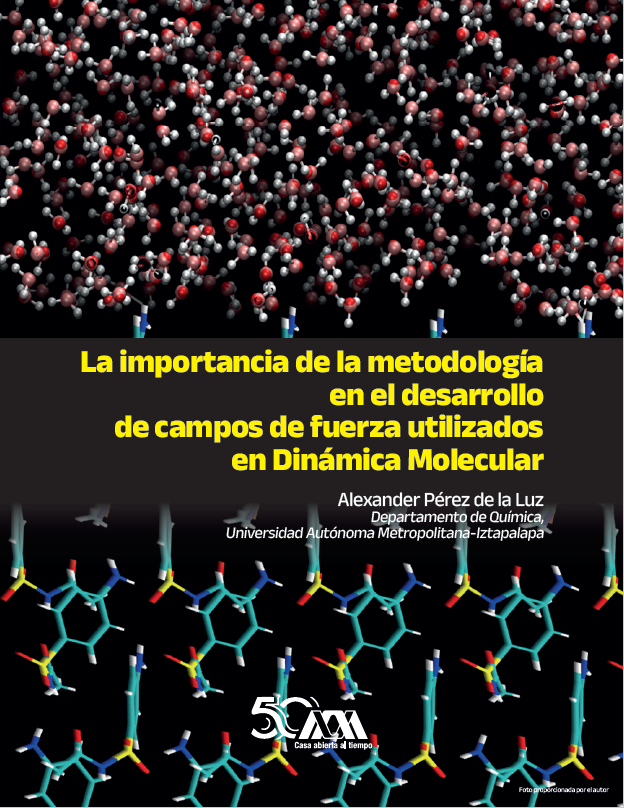La importancia de la metodología en el desarrollo de campos de fuerza utilizados en Dinámica Molecular
Abstract
Currently, simulations of systems with a large number of atoms are carried out, this has allowed us to have a better understanding of the physicochemical phenomena, giving a better understanding of the molecular factors involved in the different systems. This article describes in practical terms the importance of developing methodologies that allow improving the force fields used in Molecular Dynamics. Molecular simulation has become a valuable tool in the compression of molecular ordering where molecular interactions can be relevant, such as: the miscibility between liquids of different chemical compositions, the solubility of solids in aqueous media or organic solvents as in the case of the drugs, the study of physical phenomena such as absorption and adsorption, the folding of small biomolecules, among others.
Downloads
References
Caleman, Carl, Paul J. van Maaren, Minyan Hong, Jochen S. Hub, Luciano T. Costa, y David van der Spoel. 2012. «Force Field Benchmark of Organic Liquids: Density, Enthalpy of Vaporization, Heat Capacities, Surface Tension, Isothermal Compressibility, Volumetric Expansion Coefficient, and Dielectric Constant». Journal of Chemical Theory and Computation 8(1):61-74. doi: 10.1021/ct200731v. Callen, Herbert B., y Herbert B. Callen. 1985. Thermodynamics and an Introduction to Thermostatistics. 2. ed. New York, NY: Wiley.
Frenkel, Daan, y Berend Smit. 2002. Understanding molecular simulation: from algorithms to applications. 2nd ed. San Diego: Academic Press.
Fuentes-Azcatl, Raúl, y José Alejandre. 2014. «Non-Polarizable Force Field of Water Based on the Dielectric Constant: TIP4P/ ε». The Journal of Physical Chemistry B 118(5):1263-72. doi: 10.1021/jp410865y.
Iruin, Juan J., y Maria J. Fernandez-Berridi. 2019. Fundamentals de ciencia de polimeros: un texto introductorio. Place of publication not identified: CRC Press.
de la Luz, Alexander Pérez, G. Arlette Méndez-Maldonado, Edgar Núñez-Rojas, Fernando Bresme, y José Alejandre. 2015. «A New Force Field of Formamide and the Effect of the Dielectric Constant on Miscibility». Journal of Chemical Theory and Computation 11(6):2792-2800. doi: 10.1021/acs.jctc.5b00080.
Marenich, Aleksandr V., Christopher J. Cramer, y Donald G. Truhlar. 2009. «Universal Solvation Model Based on Solute Electron Density and on a Continuum Model of the Solvent Defined by the Bulk Dielectric Constant and Atomic Surface Tensions». The Journal of Physical Chemistry B 113(18):6378-96. doi: 10.1021/ jp810292n.
McCammon, J. Andrew, Bruce R. Gelin, y Martin Karplus. 1977. «Dynamics of Folded Proteins». Nature 267(5612):585-90. doi: 10.1038/267585a0.
Pérez de la Luz, Alexander, Jorge Alberto Aguilar-Pineda, José Guillermo Méndez- Bermúdez, y José Alejandre. 2018. «Force Field Parametrization from the Hirshfeld Molecular Electronic Density». Journal of Chemical Theory and Computation 14(11):5949-58. doi: 10.1021/acs. jctc.8b00554.
Salas, Frank José, G. Arlette Méndez-Maldonado, Edgar Núñez-Rojas, Gabriel Eloy Aguilar-Pineda, Hector Domínguez, y José Alejandre. 2015. «Systematic Procedure To Parametrize Force Fields for Molecular Fluids». Journal of Chemical Theory and Computation 11(2):683-93. doi: 10.1021/ ct500853q.






